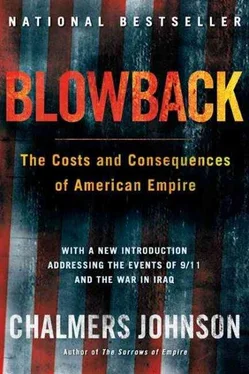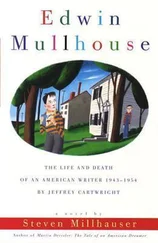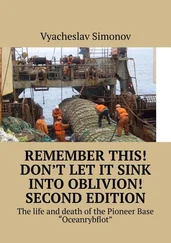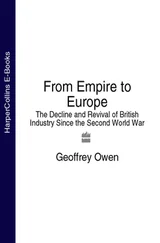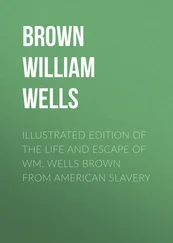Chalmers Johnson - Blowback, Second Edition - The Costs and Consequences of American Empire
Здесь есть возможность читать онлайн «Chalmers Johnson - Blowback, Second Edition - The Costs and Consequences of American Empire» весь текст электронной книги совершенно бесплатно (целиком полную версию без сокращений). В некоторых случаях можно слушать аудио, скачать через торрент в формате fb2 и присутствует краткое содержание. Год выпуска: 0101, ISBN: 0101, Издательство: Macmillan, Жанр: Старинная литература, на английском языке. Описание произведения, (предисловие) а так же отзывы посетителей доступны на портале библиотеки ЛибКат.
- Название:Blowback, Second Edition: The Costs and Consequences of American Empire
- Автор:
- Издательство:Macmillan
- Жанр:
- Год:0101
- ISBN:9780805075595
- Рейтинг книги:5 / 5. Голосов: 1
-
Избранное:Добавить в избранное
- Отзывы:
-
Ваша оценка:
- 100
- 1
- 2
- 3
- 4
- 5
Blowback, Second Edition: The Costs and Consequences of American Empire: краткое содержание, описание и аннотация
Предлагаем к чтению аннотацию, описание, краткое содержание или предисловие (зависит от того, что написал сам автор книги «Blowback, Second Edition: The Costs and Consequences of American Empire»). Если вы не нашли необходимую информацию о книге — напишите в комментариях, мы постараемся отыскать её.
Blowback, Second Edition: The Costs and Consequences of American Empire — читать онлайн бесплатно полную книгу (весь текст) целиком
Ниже представлен текст книги, разбитый по страницам. Система сохранения места последней прочитанной страницы, позволяет с удобством читать онлайн бесплатно книгу «Blowback, Second Edition: The Costs and Consequences of American Empire», без необходимости каждый раз заново искать на чём Вы остановились. Поставьте закладку, и сможете в любой момент перейти на страницу, на которой закончили чтение.
Интервал:
Закладка:
19. Pacific Stars and Stripes , February 27, 1999.
20. Philip Shenon, “Suspected North Korean Atom Site Is Empty, U.S. Finds,” New York Times , May 28, 1999.
6: China: The State of the Revolution
1. “Transcript: President Clinton’s Remarks at Beijing University,” June 29, 1998, at http://www.usconsulate.org.hk/uscn/wh/1998/0629e.htm.
2. The New York Review of Books, August 8, 1996.
3. Andrew C. Janos, “Modernization or Militarization: Germany and Russia as Great Powers,” German Politics and Society 14.1 (Spring 1996); “What Was Communism? A Retrospective in Comparative Analysis,” Communist and Post-Communist Studies 29.1 (March 1996).
4. See Meredith Woo-Cumings, ed., The Developmental State (Ithaca: Cornell University Press, 1999).
5. Los Angeles Times , May 28, 1994.
6. See Chalmers Johnson, “Political Institutions and Economic Performance: The Government-Business Relationship in Japan, South Korea, and Taiwan,” in Frederic C. Deyo, ed., The Political Economy of the New Asian Industrialism (Ithaca: Cornell University Press, 1987), pp. 136–64.
7. Gerard D. Postiglione and Grace L. Mak, eds., Asian Higher Education: An International Handbook and Reference Guide (Westport, Conn.: Greenwood, 1997), p. 41 (on China) and p. 349 (on Taiwan).
8. For a good description of this aspect of Taiwan’s political economy, see Karl J. Fields, “KMT, Inc.: Party Capitalism in a Developmental State,” Japan Policy Research Institute Working Paper , no. 47, June 1998.
7: China: Foreign Policy, Human Rights, and Trade
1. Los Angeles ‘Times , February 11, 1999.
2. Los Angeles Times , February 12, 1999.
3. Free China Journal, March 5, 1999, p. 2.
4. New York Times , March 24, 1999.
5. See “The Rumsfeld Report: How Soon Might the U.S. Homeland Face a Threat from Ballistic Missile Proliferation?” Proliferation Roundtable at the Carnegie Endowment for International Peace, September 17, 1998, on-line at http://www.ceip.org/programs/npp/rumsfeld.htm.
6. Los Angeles Times , March 3, 1999.
7. I am indebted to participants in the Conference on International Issues in the South China Sea, sponsored by the Norwegian Institute of International Affairs, Oslo, September 20, 1995, for many of these points. See also Victor Prescott, “The Spratly Islands,” Quadrant , October 1995, pp. 58–63.
8. Jim Mann, “CIA Gave Aid to Tibetan Exiles in ’60s, Files Show,” Los Angeles Times , September 15, 1998; Jonathan Mirsky. “The Dalai Lama on Succession and on the CIA,” New York Review of Books , June 10, 1999. For further details on Tibet’s status, see Dawa Norbu, Red Star over Tibet (London: Collins, 1974); Freedom in Exile: The Autobiography of the Dalai Lama (New York: HarperCollins, 1990); A. Tom Grunfeld, The Making of Modern Tibet (Armonk, N.Y.: M. E. Sharpe, 1987); John Kenneth Knaus, Orphans of the Cold War: America and the Tibetan Struggle for Survival (New York: Public Affairs, 1999).
9. Rone Tempest, “China Installs Its Pick for Panchen Lama,” Los Angeles Times , December 9, 1995.
10. Foreword, in Abdul Aziz Said, ed., Human Rights and World Order (New Brunswick, N.J.: Transaction Books, 1978), pp. vii—viii.
11. See, e.g., Wendell L. Willkie II, “Why Does MFN Dominate America’s China Policy?” Heritage Lectures , no. 486, March 29, 1994.
12. Lee Kuan Yew, “America’s Model for Social Order Doesn’t Work Anymore,” Los Angeles Times , October 6, 1995.
13. New York Times , March 16, 1999.
14. See Christopher Lingle, Singapore’s Authoritarian Capitalism: Asian Values, Free Mdrket Illusions and Political Dependency (Fairfax, Va.: Locke Institute, 1996), pp. 117–18.
15. New York Times , March 16, 1999.
16. “Interview: Dalai Lama,” Los Angeles Times , May 15, 1994.
17. November 10, 1994.
18. See Greg Mastel, Trading with the Middle Kingdom (Washington, D.C.: Economic Strategy Institute, 1995).
8: Japan and the Economies of the American Empire
1. Even though American archives on this period remain secret, the main details have leaked out and are discussed by Michael Schaller in Altered States: The United States and Japan Since the Occupation (New York: Oxford University Press, 1997); and Walter LaFeber in The Clash: U.S. Japanese Relations Throughout History (New York: W. W. Norton, 1997).
2. John Hunter Boyle, Modern Japan: The American Nexus (Forth Worth, Tex.: Harcourt, Brace, Jovanovich, 1993), p. 352.
3. The best critique of modernization theory applied to Japan is John Dower’s hundred-page introduction in Dower, ed., Origins of the Modern Japanese State: Selected Writings of E. H. Norman (New York: Pantheon, 1975).
4. Business Week , August 7, 1989.
5. Foreign Service Journal , December 1989.
6. Newsweek , October 9, 1989.
7. Washington Post , December 10, 1990.
8. See Chalmers Johnson, MITI and the Japanese Miracle: The Growth of Industrial Policy , 1925–1975 (Stanford: Stanford University Press, 1982).
9. New York Times , August 15, 1993.
10. Wall Street Journal , January 8, 1986.
11. Wall Street Journal , January 31, 1997.
9: Meltdown
1. Rich Roesler, “Dying for Sex,” Pacific Stars and Stripes, August 30, 1998.
2. Judith Stein, Running Steel , Running America: Race, Economic Policy, and the Decline of Liberalism (Chapel Hill: University of North Carolina Press, 1998), p. 4.
3. William Greider, One World, Ready or Not: The Manic Logic of Global Capitalism (New York: Simon & Schuster, 1997), p. 221.
4. Quoted by David Friedman, “How Wall Street’s Moral Hubris Condones Social Inequality,” Los Angeles Times , May 31, 1998. For Oxfam and its policy papers, see its Web site at http://www.oneworld.org/oxfam/index.html.
5. John Ralston Saul, “Paper Games and Monetary Chaos,” New York Times , October 9, 1992.
6. Peter Hartcher and Andrew Comell, “Mr. Yen, the Man Who Started the Asian Crisis,” Australian Financial Review Magazine , July 1999, pp. 34–40. Also see Klaus Engelen, “How Bill Clinton Really Won,” European , November 14–20, 1996.
7. Ron Bevacqua, “Whither the Japanese Model? The Asian Economic Crisis and the Continuation of Cold War Politics in the Pacific Rim,” Review of International Political Economy 5.3 (Autumn 1998), pp. 410–23. See also Andrew Z. Szamosszegi, “How Asia Went from Boom to Gloom,” World and 1, May 1998, pp. 52–59.
8. David D. Hale, “The IMF After the Asia Crisis,” Zurich Insurance Group (interrnal paper), February 13, 1998.
9. San Diego Union-Tribune , September 20, 1998. See also George Soros, The Crisis of Global Capitalism: Open Society Endangered (New York: Public Affairs, 1998).
10. Jagdish Bhagwati, “The Capital Myth: The Difference Between Trade in Widgets and Dollars,” Foreign Affairs 77.3 (May—June 1998), pp. 7–12.
11. New York Times , editorial, November 25, 1997. See also Peter Truell, “An Alchemist Who Turned Gold into Lead,” New York Times , September 25, 1998; “Crony Capitalism,” Nation , October 19, 1998; Timothy L. O’Brien and Laura M. Holson, “Hedge Fund’s Star Power Lulled Big Financiers into Complacency,” New York Times , October 23, 1998; Gretchen Morgenson and Michael M. Weinstein, “Two Nobel Economists Get a Lesson in Real Economics,” New York Times , November 14, 1998; “On Regulating Derivatives,” New York Times , December 15, 1998; and Leon Levy and Jeff Madrick, “Hedge Fund Mysteries,” New York Review of Books , December 17, 1998.
Читать дальшеИнтервал:
Закладка:
Похожие книги на «Blowback, Second Edition: The Costs and Consequences of American Empire»
Представляем Вашему вниманию похожие книги на «Blowback, Second Edition: The Costs and Consequences of American Empire» списком для выбора. Мы отобрали схожую по названию и смыслу литературу в надежде предоставить читателям больше вариантов отыскать новые, интересные, ещё непрочитанные произведения.
Обсуждение, отзывы о книге «Blowback, Second Edition: The Costs and Consequences of American Empire» и просто собственные мнения читателей. Оставьте ваши комментарии, напишите, что Вы думаете о произведении, его смысле или главных героях. Укажите что конкретно понравилось, а что нет, и почему Вы так считаете.
